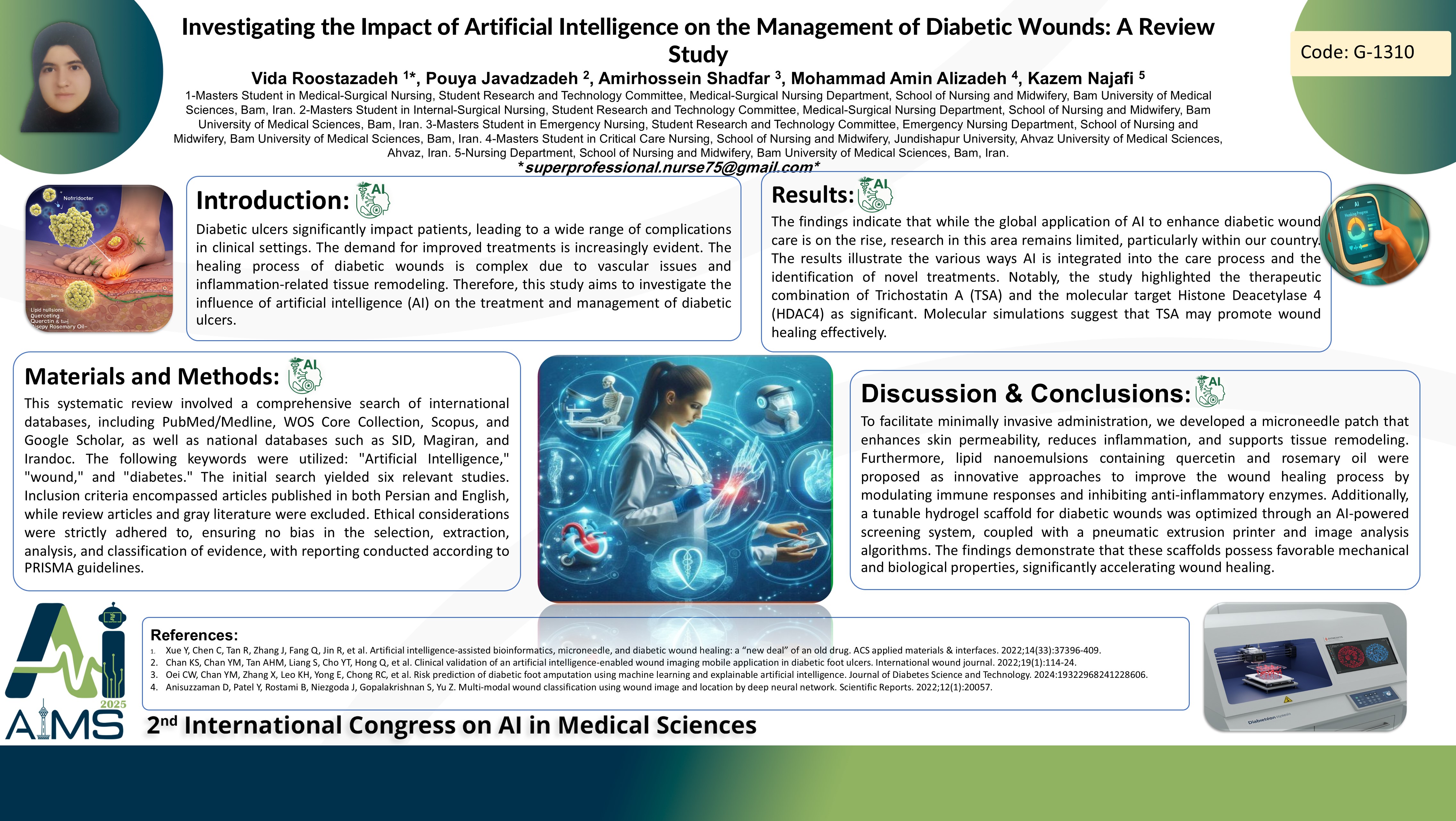بررسی تاثیر هوش مصنوعی در مدیریت زخم های دیابتی: یک مطالعه مروری
کد: G-1310
نویسندگان: Vida Roostazadeh * ℗, Pouya Javadzadeh, Amirhossein Shadfar, Mohammad Amin Alizadeh, Kazem Najafi
زمان بندی: زمان بندی نشده!
برچسب: دستیار مجازی هوشمند
دانلود: دانلود پوستر
خلاصه مقاله:
خلاصه مقاله
Introduction Diabetic ulcers significantly impact patients, leading to a wide range of complications in clinical settings. The demand for improved treatments is increasingly evident. The healing process of diabetic wounds is complex due to vascular issues and inflammation-related tissue remodeling. Therefore, this study aims to investigate the influence of artificial intelligence (AI) on the treatment and management of diabetic ulcers. Methodology Objective: This systematic review involved a comprehensive search of international databases, including PubMed/Medline, WOS Core Collection, Scopus, and Google Scholar, as well as national databases such as SID, Magiran, and Irandoc. The following keywords were utilized: "Artificial Intelligence," "wound," and "diabetes." The initial search yielded six relevant studies. Inclusion criteria encompassed articles published in both Persian and English, while review articles and gray literature were excluded. Ethical considerations were strictly adhered to, ensuring no bias in the selection, extraction, analysis, and classification of evidence, with reporting conducted according to PRISMA guidelines. Results The findings indicate that while the global application of AI to enhance diabetic wound care is on the rise, research in this area remains limited, particularly within our country. The results illustrate the various ways AI is integrated into the care process and the identification of novel treatments. Notably, the study highlighted the therapeutic combination of Trichostatin A (TSA) and the molecular target Histone Deacetylase 4 (HDAC4) as significant. Molecular simulations suggest that TSA may promote wound healing effectively. To facilitate minimally invasive administration, we developed a microneedle patch that enhances skin permeability, reduces inflammation, and supports tissue remodeling. Furthermore, lipid nanoemulsions containing quercetin and rosemary oil were proposed as innovative approaches to improve the wound healing process by modulating immune responses and inhibiting anti-inflammatory enzymes. Additionally, a tunable hydrogel scaffold for diabetic wounds was optimized through an AI-powered screening system, coupled with a pneumatic extrusion printer and image analysis algorithms. The findings demonstrate that these scaffolds possess favorable mechanical and biological properties, significantly accelerating wound healing.
کلمات کلیدی
Artificial Intelligence, Wound, Diabetes, Treatment, Review
